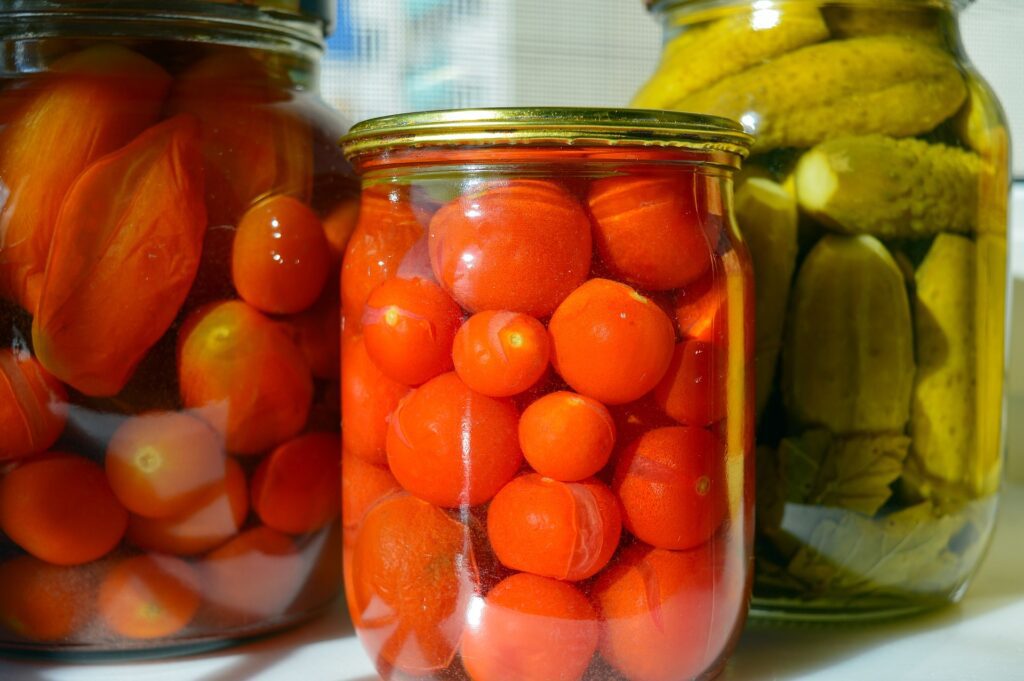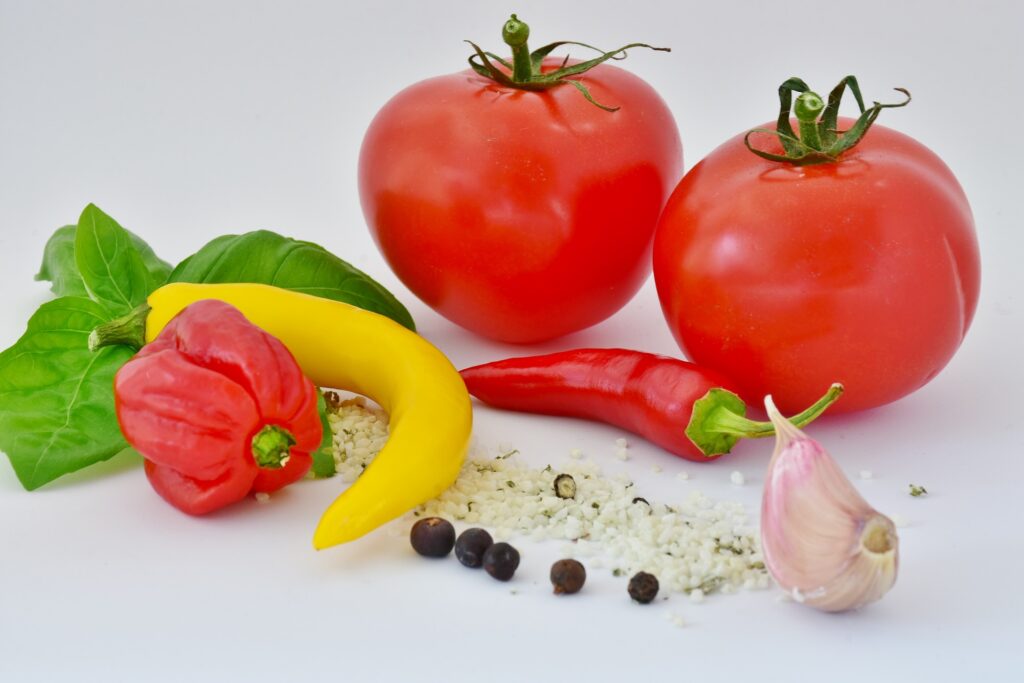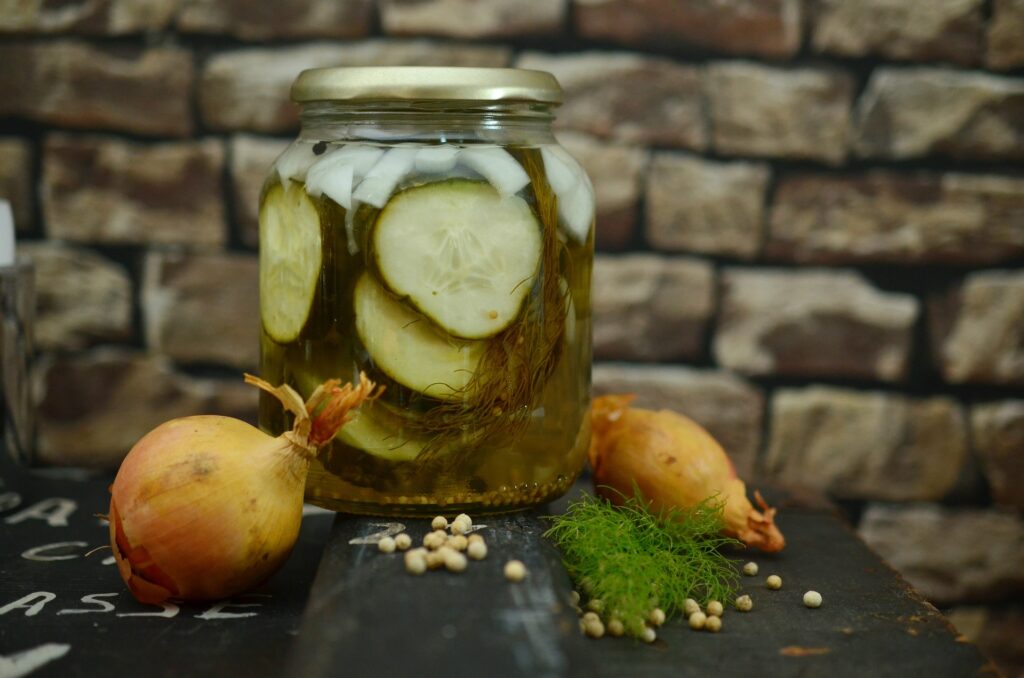Have you ever tried pickling fruits or vegetables? It’s a great way to preserve them so you can enjoy them in a different way and for longer. Many people are intimidated by the thought of pickling fruits and vegetables. It seems complicated and like something that requires a lot of special ingredients or equipment. But, in reality, it’s not difficult at all. With a few simple tips for pickling and a recipe, you’ll be able to pickle any fruit or vegetable in no time.
So what are you waiting for? Get started preserving your favourite produce today!

What does pickling involve?
Pickling is a process of preserving fruits and vegetables in a solution of vinegar, salt, and sugar. The pickling process helps to preserve the fruit or vegetables’ flavour and nutrition. It also gives it a unique taste that comes from the specific flavour combinations of the pickling liquid.
The produce is first cleaned and cut into desired shapes before being submerged in the pickling solution, along with spices and herbs for flavour. The acidic environment created by the vinegar helps to inhibit bacterial growth, thereby extending the shelf life of the food.
Pickled fruits and vegetables can be enjoyed as a snack or used as a condiment to add flavour to dishes such as sandwiches or salads.
Here are 7 tips to consider ahead of making pickles:
1. Think about how you intend to use and enjoy your pickles
It’s important to consider how you plan on using or enjoying your pickled fruits and vegetables before starting the pickling process. This is because different recipes and pickling liquids are better suited for certain types of produce. The end result can vary depending on these choices.
For example, if you plan on using your pickled vegetables in sandwiches or salads, you may want to choose a recipe that includes milder spices and herbs. This will ensure that the pickle adds to and does not overpower the other flavours. On the other hand, if you’re looking for a bold flavour profile to enjoy as a snack, you may want to choose a recipe with stronger spices such as chilli flakes or black peppercorns.
Additionally, the type of fruits and vegetables preferred can also impact the final product. Firmer varieties like cucumbers or carrots are great for crunchy pickles. Softer options like peaches or pears are better suited for sweeter preserves.
By considering your end goal ahead of time, you’ll be able to make informed choices when it comes to selecting your produce, recipe, and pickling liquid.
2. Choose your fruits and vegetables for pickling wisely.
The variety of a specific fruit/vegetable that you use will impact the final flavour and texture of your pickled preserve. Certain types of products are stronger and milder than others. There is a spectrum of produce that is more or less prone to becoming softer or maintaining crunch.
For the best flavour, choose fruit and vegetables that are fresh and have not been treated with chemicals. If possible, buy organic produce from a farmer’s market or grocery store.

Make sure that the fruit/vegetables are not sprouting or softened. This is a clear indicator that it is no longer fresh. They should be firm, ideally without blemishes. And it should smell of the characteristic freshness of that specific fruit or vegetable only. Ensure that it is without any musty notes that could suggest mildew or mould.
Checking these aspects may realise a better outcome for the final pickled preserve.
3. Select a pickling solution that meets your taste and intentions.
Vinegar and water are the most common pickling solutions. The types of vinegar (red wine vinegar, white wine vinegar, apple cider vinegar, and balsamic vinegar, fruit vinegar) bring their distinctive characteristics to the taste and look of the final product.
The type of pickling solution you choose will also affect the final taste of the preserve.
Choosing the right vinegar for pickling is essential to ensure that the preserved fruits and vegetables remain safe to consume for an extended period. Vinegar with a minimum of 5% acidity, sometimes labelled as “pickling vinegar,” is recommended for use in pickling. For other types of vinegar, it is then important to read the small print on the bottles to make sure that it confirms the content as including 5% acetic acid.
Acetic acid, which is present in vinegar, creates an acidic environment that prevents the growth of harmful bacteria and limits spoilage. Using vinegar with less than 5% acetic acid may not provide enough acidity to sufficiently halt bacterial growth, leading to spoilage of the pickled produce. Spoiled food can cause foodborne illnesses and pose health risks to consumers.
Additionally, using vinegar with lower acidity levels may result in a shorter shelf life for the pickled preserve. In summary, choosing vinegar with at least 5% acetic acid content is crucial for ensuring the safety and longevity of your homemade pickled fruits and vegetables. It’s always better to be safe than sorry when it comes to preserving food!
4. Choose a salt that is good for pickling
The type of salt you choose for pickling fruits and vegetables can have a significant impact on the final product. In addition to adding flavour, salt also has preserving power that helps keep your pickles fresh for longer periods.
However, it’s important to note that some types of salt may contain anti-caking agents which can make the pickling liquid cloudy and negatively impact the texture of your produce. To avoid this, it’s best to use pure, unrefined salts like sea salt or kosher salt which do not contain any additives. These types of salts are also less likely to overpower the flavours of your spices and herbs, allowing them to shine through in your final product.
Overall, choosing the right type of salt is crucial in achieving a successful outcome when pickling fruits and vegetables.
5. Add a selection of herbs and spices to your pickling liquid
Spices and herbs are often added to pickling or brining liquids to enhance the flavour and customize the taste of preserved fruits and vegetables. The use of spices such as mustard seeds, coriander, and dill can add a unique depth of flavour to the pickling liquid while herbs like thyme, rosemary, and bay leaves can add a fragrant aroma that complements the produce.
The combination of different spices and herbs can be adjusted based on personal preference, which allows for endless possibilities in creating customized pickled preserves. Adding your favourite spices or experimenting with new combinations is a fun way to personalize your homemade pickled fruits and vegetables!
6. Size and number of jars
When it comes to choosing the size and number of jars for pickling fruits and vegetables, it’s important to consider your intentions and needs. If you’re planning on making quick refrigerator pickles that will be eaten soon after they mature, a couple of larger jars may suffice.
However, if you’re looking to create pickles that can be savoured over a longer period or want to accommodate smaller bits of fruits or vegetables, several smaller jars may be more appropriate. These small jars are also ideal for gifting to friends and family who appreciate homemade preserves.
Additionally, the recipe being used can also impact jar size selection. Some recipes require more space for expansion during the fermentation process while others may need less room.

If you plan to pickle large amounts of any specific fruits/vegetables, you may want to consider using multiple smaller jars instead of one or many larger jars – this will limit the contamination risk once the jars are open in the refrigerator and accessed over an extended period. How much available fridge space may of course make this decision for you.
Ultimately, choosing the right jar size can help ensure that your pickled fruits and vegetables turn out just as intended and are enjoyed to their fullest potential.
7. Be patient – it’s worth it!
Time and patience are essential when it comes to pickling fruits and vegetables. Allowing the produce to mature in the pickling liquid for an extended period allows the flavours to develop, resulting in a more complex and mellow taste.
The acidic environment of the pickling liquid breaks down the fibres of the produce, allowing it to absorb the spices and herbs added to it. This process takes time, and while it can be tempting to sample your homemade pickles immediately after making them, it’s important to resist that urge and allow them to sit for a few weeks or even months.
With time, the flavour profile will evolve into something truly delicious!
Now that you have some tips about pickling, what will you pickle first? Try out different fruits and vegetables to see which ones you like the best. With such a wide variety of produce available year-round, there’s always something new to try. Will you go for classic cucumber dill pickles or spice things up with ginger carrots? The sky—or rather, your taste buds—is the limit.
Be creative with your recipes and don’t forget to share them with friends and family. Pickling is a great way to expand the enjoyment of fruits and vegetables, extend their shelf-life, and reduce food waste. So get pickling!